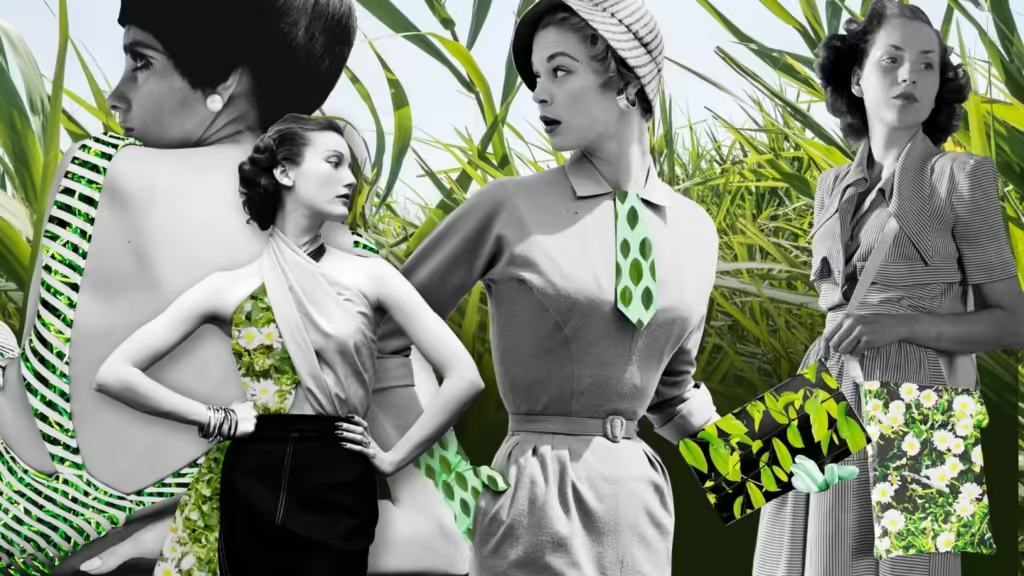Introduction
Defining Sustainable Fashion
Sustainable fashion, often referred to as eco-fashion, emphasizes creating a system that can be supported indefinitely in terms of environmental and social responsibility. This approach to fashion design, production, and consumption aims to minimize the negative impact on the environment and improve the social and economic conditions of those involved in the fashion supply chain.
Relevance and Importance
As global awareness of climate change and social issues grows, sustainable fashion has become a significant movement. The fashion industry is one of the most polluting industries globally, and the shift towards sustainability is crucial for reducing environmental impact, improving labor conditions, and promoting ethical consumption. Consumers are increasingly demanding transparency and responsibility from brands, making sustainable fashion more relevant than ever.
Historical Context
Evolution and Influences
Sustainable fashion has evolved significantly over the past few decades. Initially, it was a niche market with limited options and higher costs. However, influences from environmental movements, the rise of ethical consumerism, and advancements in technology have expanded its reach and feasibility. Key milestones include the advent of organic cotton in the 1990s, the rise of fair trade practices, and the development of innovative materials like recycled polyester.
Types and Categories
Eco-Friendly Materials
Eco-friendly materials are the cornerstone of sustainable fashion. These include organic cotton, hemp, bamboo, and recycled fabrics. Organic cotton, for instance, is grown without harmful pesticides and uses less water compared to conventional cotton. Recycled fabrics repurpose existing materials, reducing waste and conserving resources.
Ethical Production Practices
Ethical production focuses on fair labor practices, ensuring safe working conditions, and fair wages for workers. Brands like Patagonia and Everlane have set benchmarks by being transparent about their supply chains and labor practices.
Slow Fashion
Slow fashion encourages mindful consumption by promoting quality over quantity. It advocates for buying fewer, but better-made items that last longer. This approach contrasts sharply with the fast fashion model, which emphasizes rapid production and turnover of cheap, trendy items.
Symptoms and Signs
Environmental Impact
The environmental symptoms of traditional fashion practices are severe. These include water pollution from dyeing processes, excessive water usage in cotton farming, and significant carbon emissions from production and transportation.
Social and Ethical Issues
Social symptoms include poor working conditions, child labor, and unfair wages prevalent in many garment factories worldwide. Ethical fashion aims to address these issues by promoting fair trade and ethical labor practices.
Causes and Risk Factors
Biological Factors
The fashion industry’s heavy reliance on natural resources, such as water, cotton, and wool, has led to significant biological impacts. The overuse of these resources contributes to environmental degradation and loss of biodiversity.
Environmental Factors
Environmental risk factors include pollution from toxic dyes and chemicals, excessive water usage, and the disposal of non-biodegradable materials in landfills. These practices lead to long-term environmental damage.
Lifestyle Factors
Consumer behavior plays a crucial role in the fashion industry’s sustainability. The fast fashion culture, driven by a desire for constant newness and affordability, exacerbates the industry’s environmental and social issues.
Diagnosis and Tests
Lifecycle Assessment (LCA)
Lifecycle Assessment is a technique used to evaluate the environmental impacts associated with all stages of a product’s life, from raw material extraction to disposal. This assessment helps in identifying areas where improvements can be made to reduce the environmental footprint.
Fair Trade Certification
Fair Trade Certification ensures that products meet rigorous social, environmental, and economic standards. It guarantees that farmers and workers receive fair wages, work in safe conditions, and engage in environmentally sustainable practices.
Treatment Options
Sustainable Material Innovations
Innovations in sustainable materials are crucial for the future of fashion. Examples include biodegradable fabrics, fabrics made from recycled ocean plastics, and lab-grown leather. These materials reduce environmental impact and offer viable alternatives to traditional textiles.
Circular Fashion
Circular fashion promotes the reuse, recycling, and upcycling of garments. This approach aims to create a closed-loop system where waste is minimized, and materials are kept in use for as long as possible. Brands like Eileen Fisher and Stella McCartney are pioneers in adopting circular fashion practices.
Eco-Friendly Dyes and Processes
The development of eco-friendly dyes and sustainable production processes reduces the environmental impact of garment manufacturing. Techniques such as digital printing, waterless dyeing, and the use of natural dyes help in minimizing pollution and conserving resources.
Preventive Measures
Mindful Consumption
Consumers can contribute to sustainable fashion by adopting mindful consumption habits. This includes buying less, choosing quality over quantity, supporting ethical brands, and considering the lifecycle of products before purchase.
Educating Consumers
Education plays a vital role in promoting sustainable fashion. Awareness campaigns, workshops, and informational resources can help consumers understand the impact of their choices and encourage more sustainable behaviors.
Policy and Regulation
Government policies and regulations can drive significant change in the fashion industry. Implementing stricter environmental and labor standards, offering incentives for sustainable practices, and promoting transparency in supply chains are essential steps.
Personal Stories or Case Studies
Real-Life Implications
Real-life stories of individuals and communities affected by the fashion industry can highlight the importance of sustainable practices. For instance, the Rana Plaza factory collapse in 2013 brought global attention to the dire working conditions in garment factories, spurring calls for change and the adoption of more ethical practices.
Expert Insights
Medical Professionals on Textile Chemicals
Experts in environmental health and toxicology often highlight the dangers of chemicals used in textile production. These chemicals can cause skin irritations, respiratory issues, and long-term health problems for both workers and consumers.
Fashion Industry Leaders
Fashion industry leaders like Stella McCartney and Vivienne Westwood advocate for sustainable practices and use their platforms to promote environmental and social responsibility within the industry.
Conclusion
Summary of Key Points
Sustainable fashion is not just a trend but a necessary shift towards a more responsible and ethical industry. By embracing eco-friendly materials, ethical production practices, and mindful consumption, we can significantly reduce the fashion industry’s environmental and social impact.
Call to Action
Consumers, brands, and policymakers must work together to drive the change towards sustainable fashion. By making informed choices, supporting ethical brands, and advocating for better practices, we can create a more sustainable future for fashion.






Be First to Comment